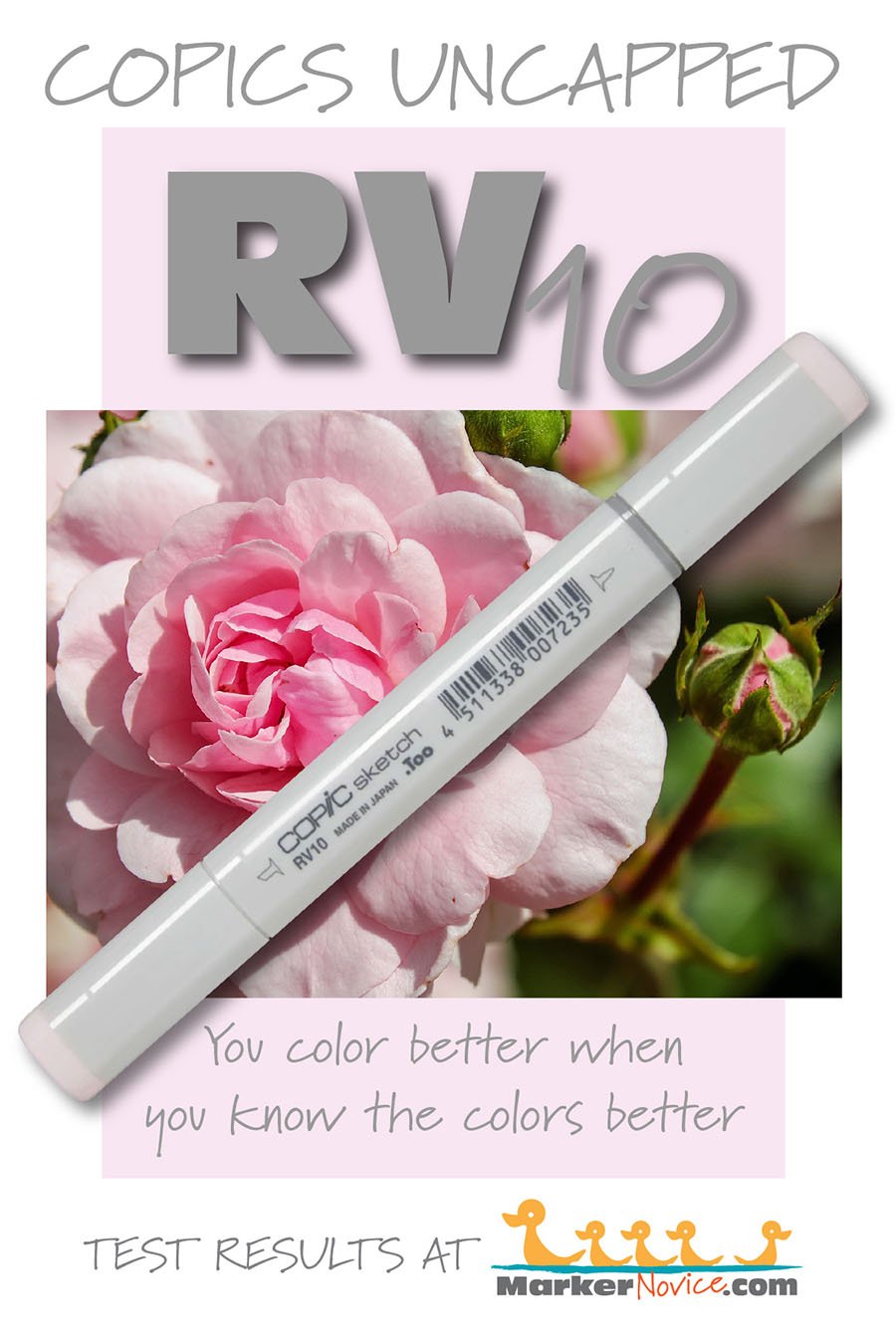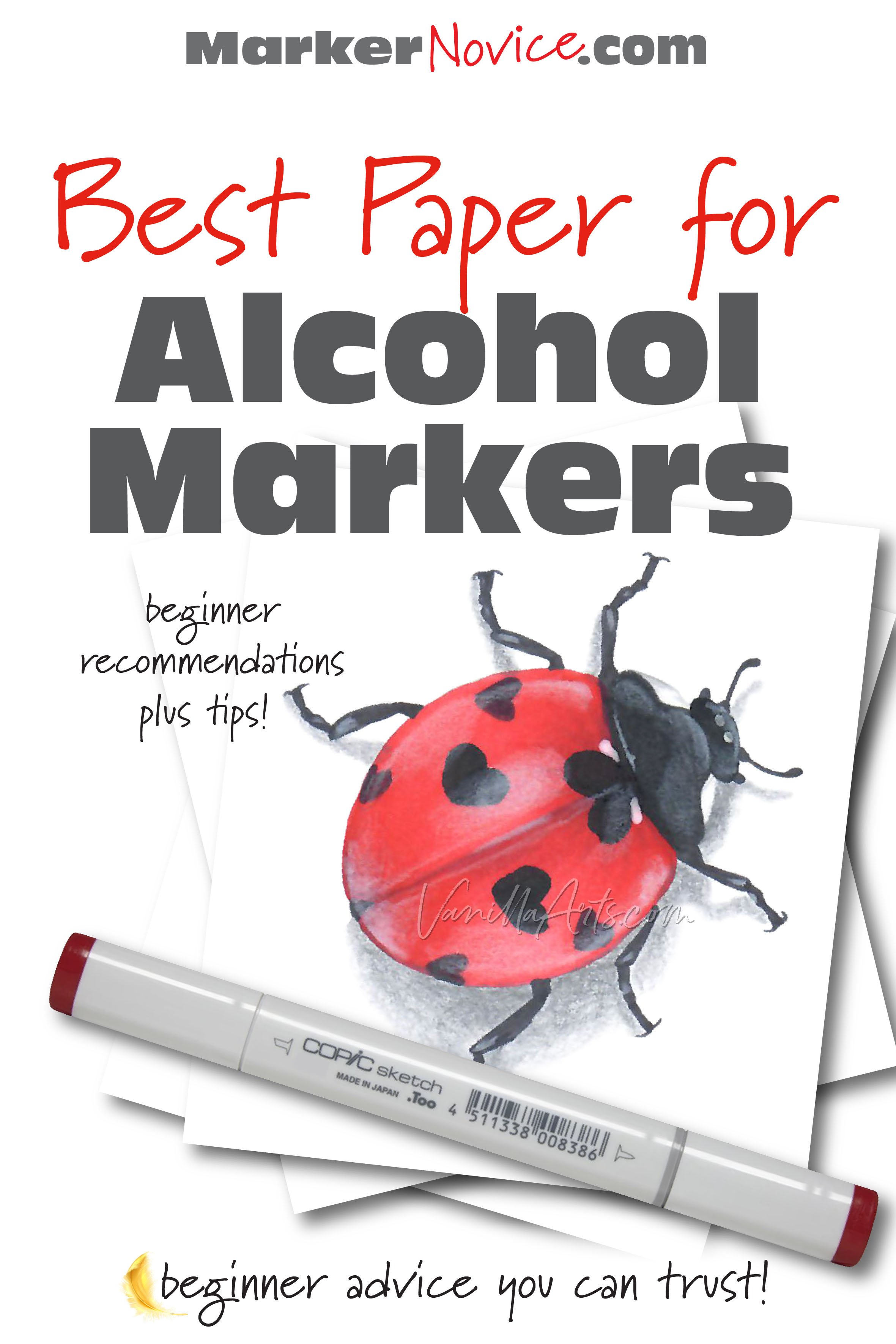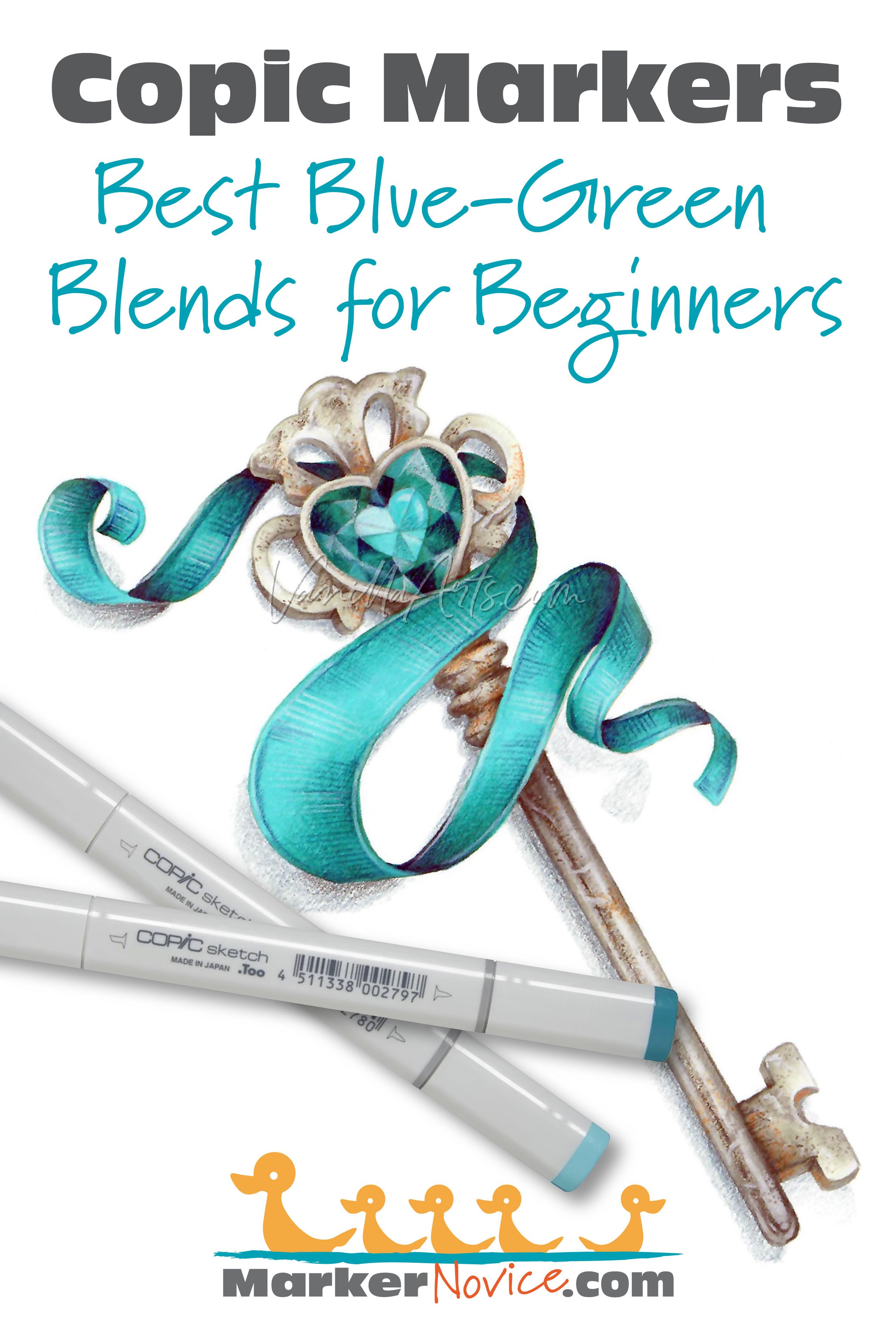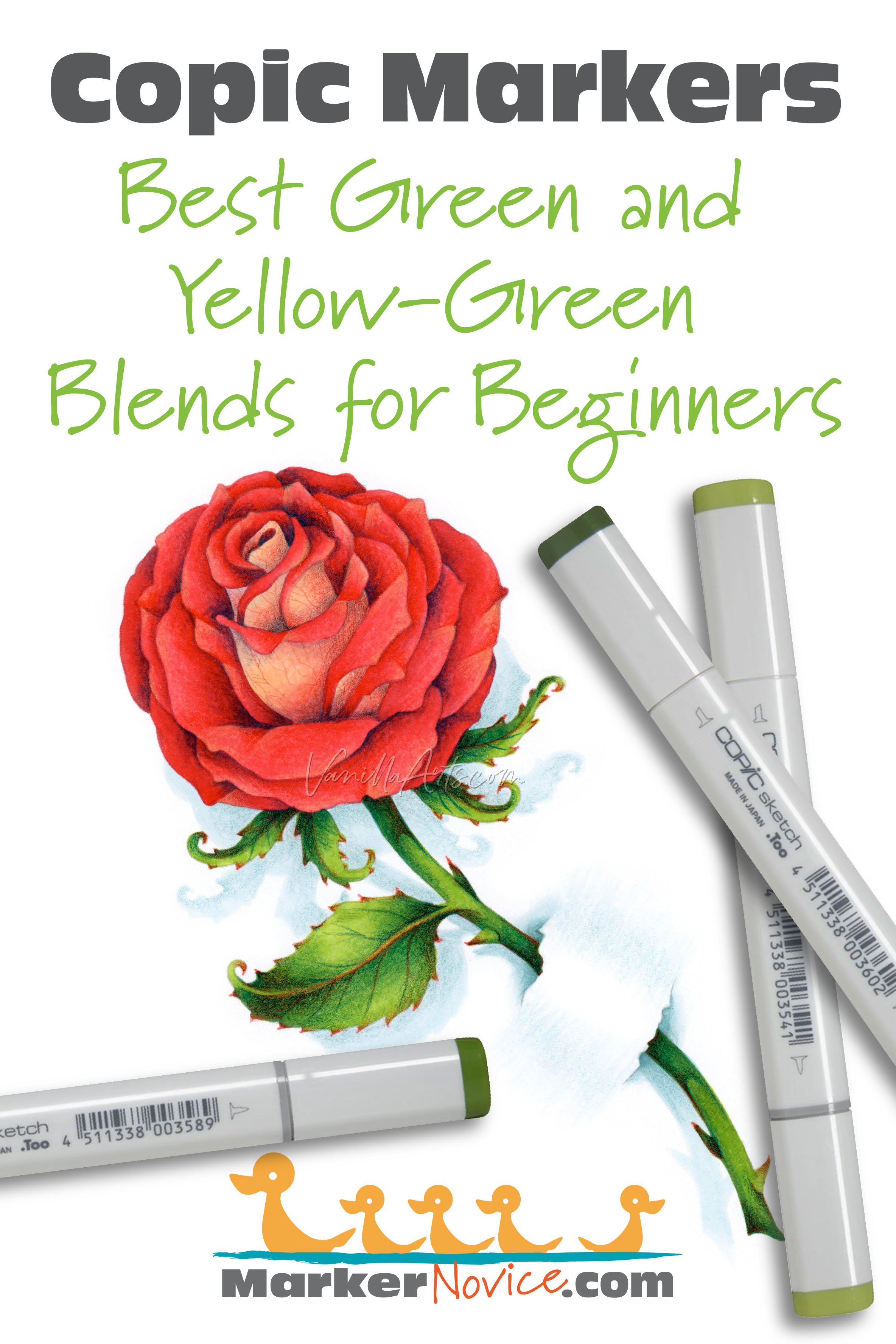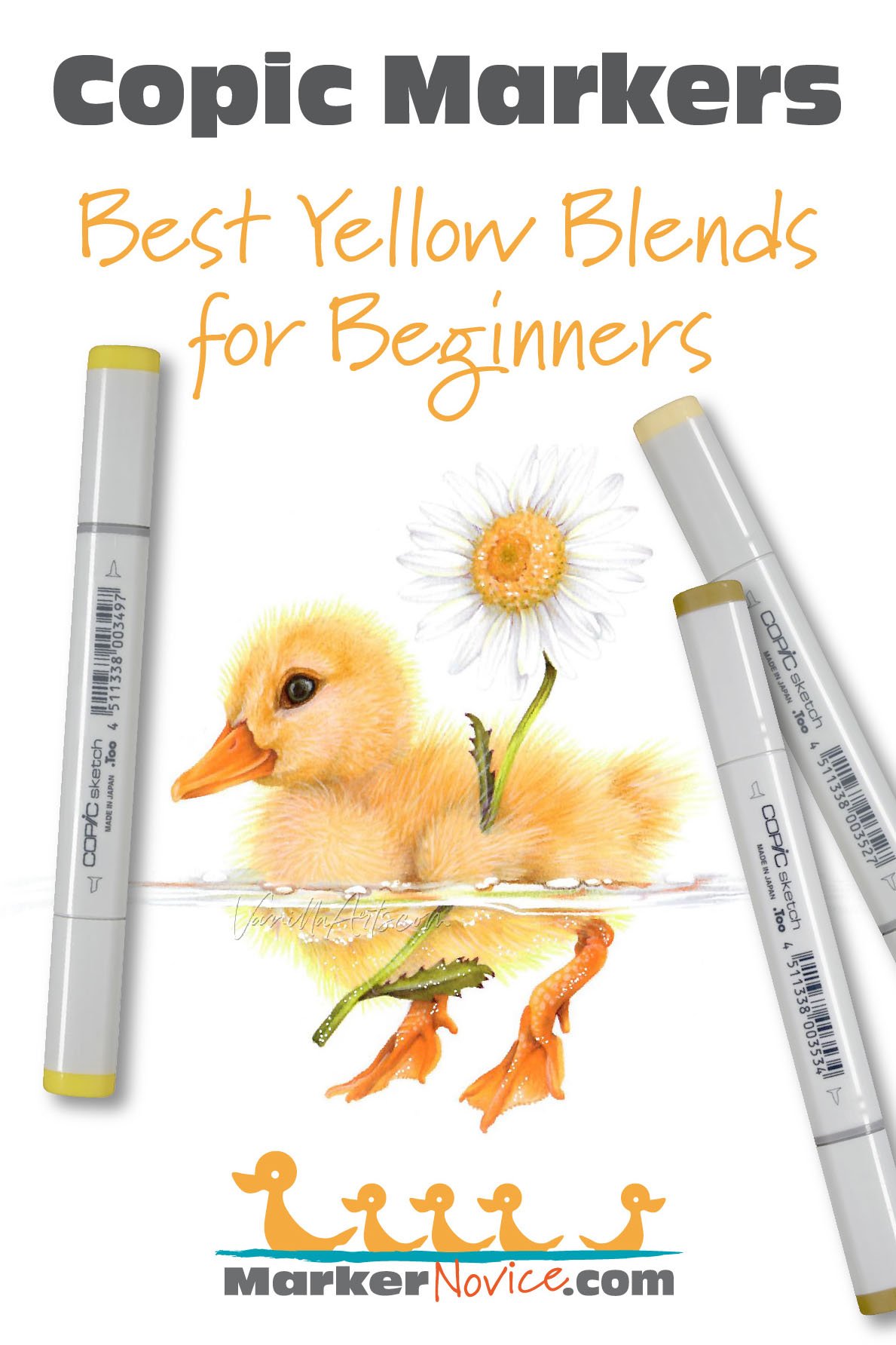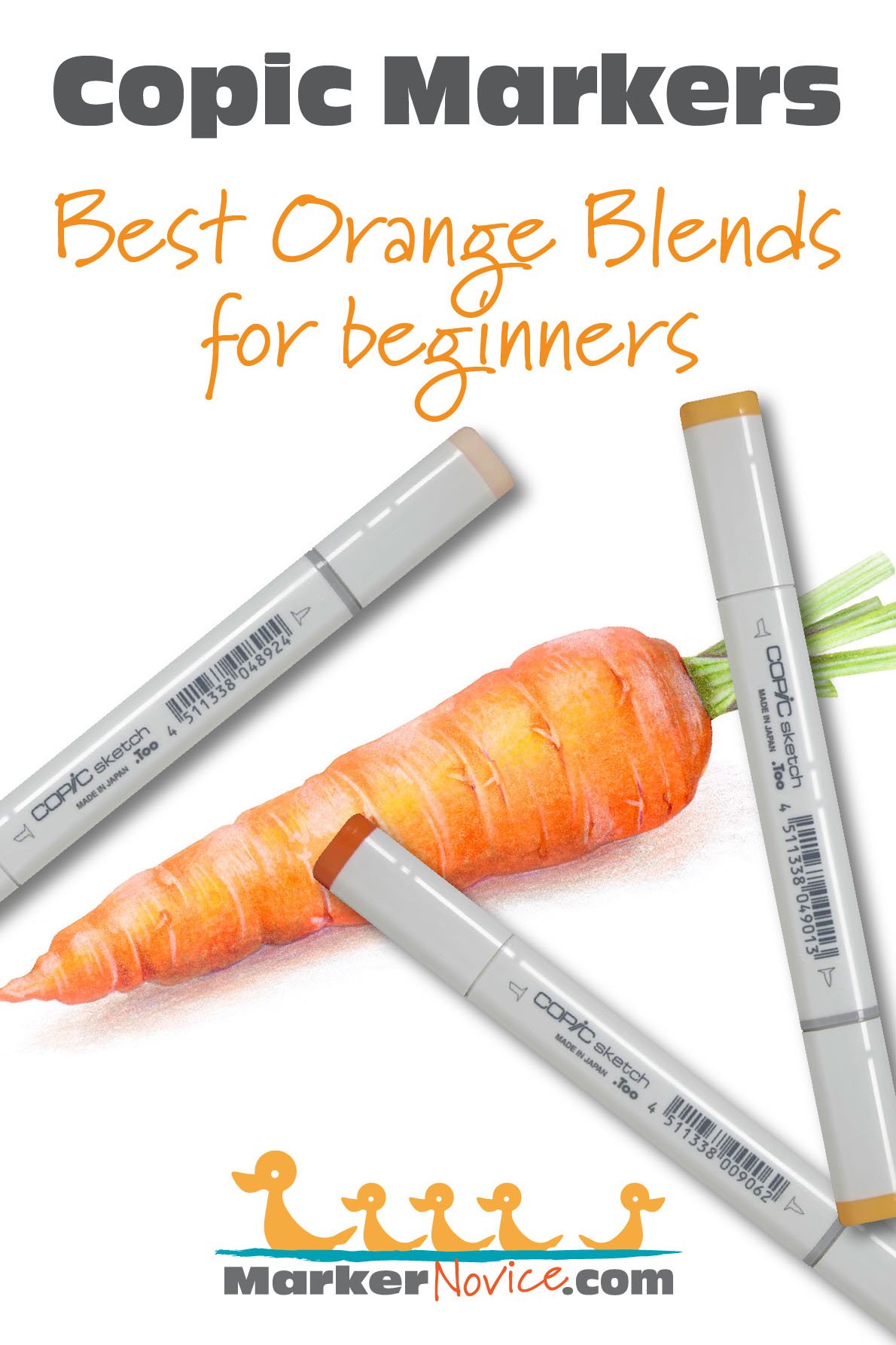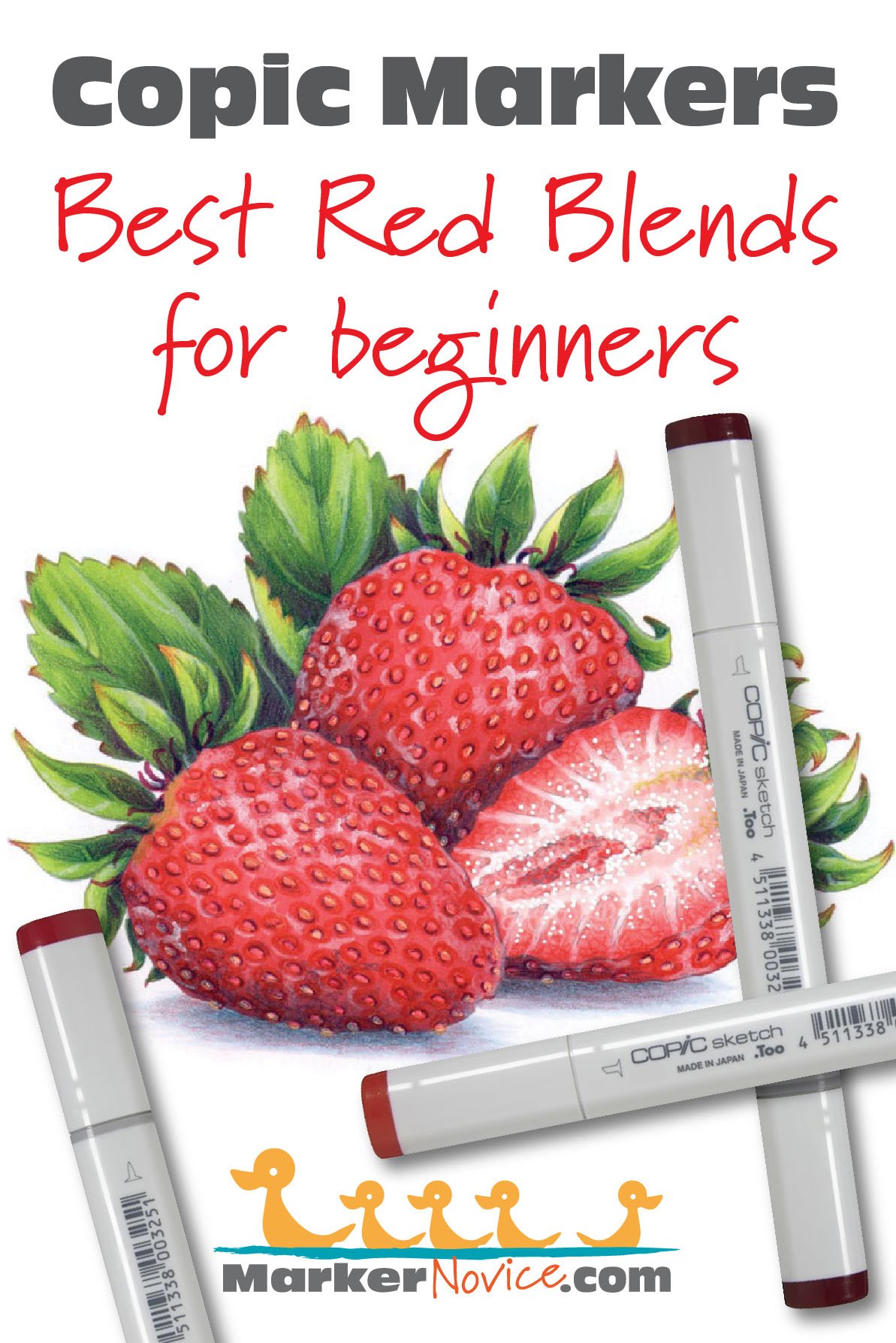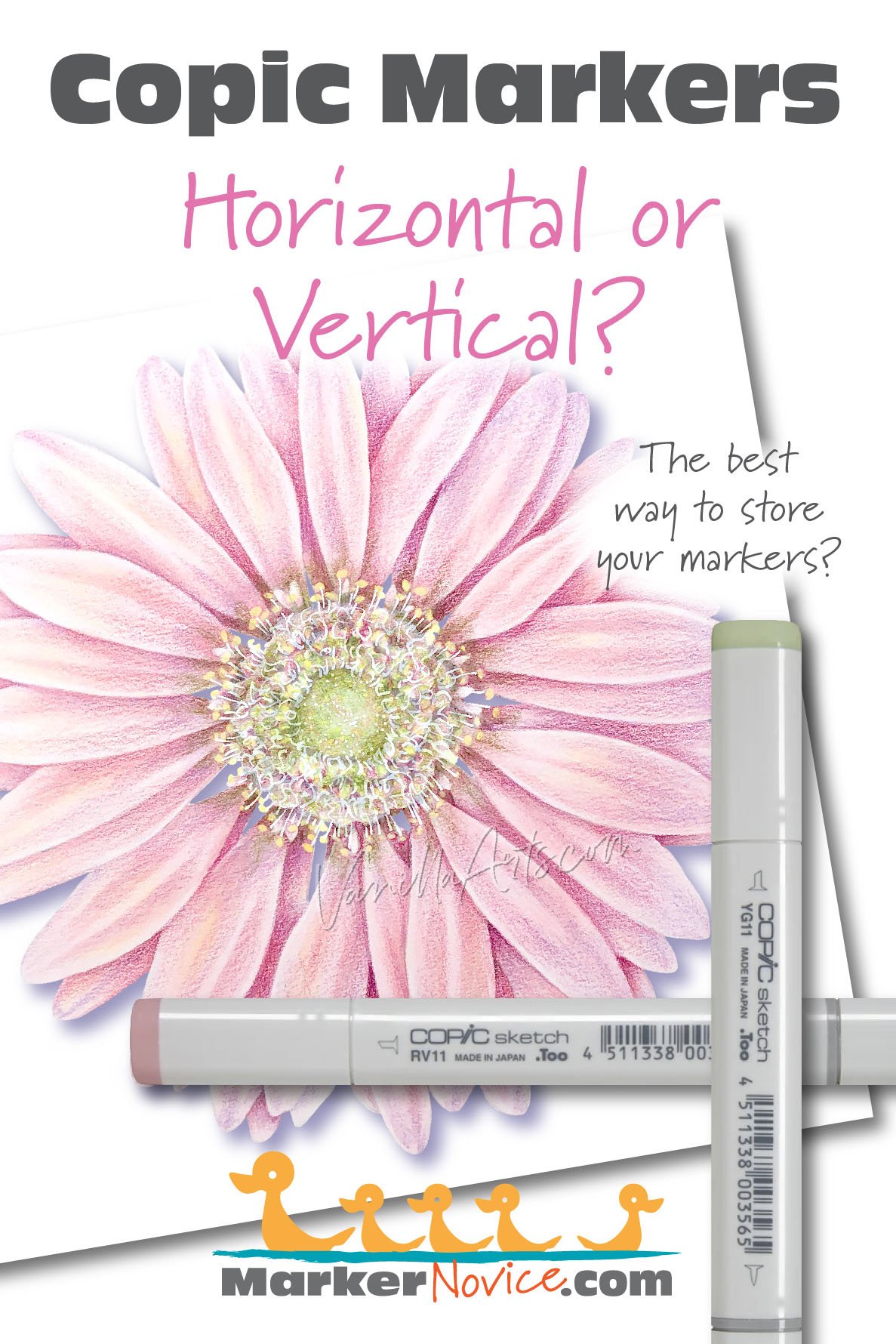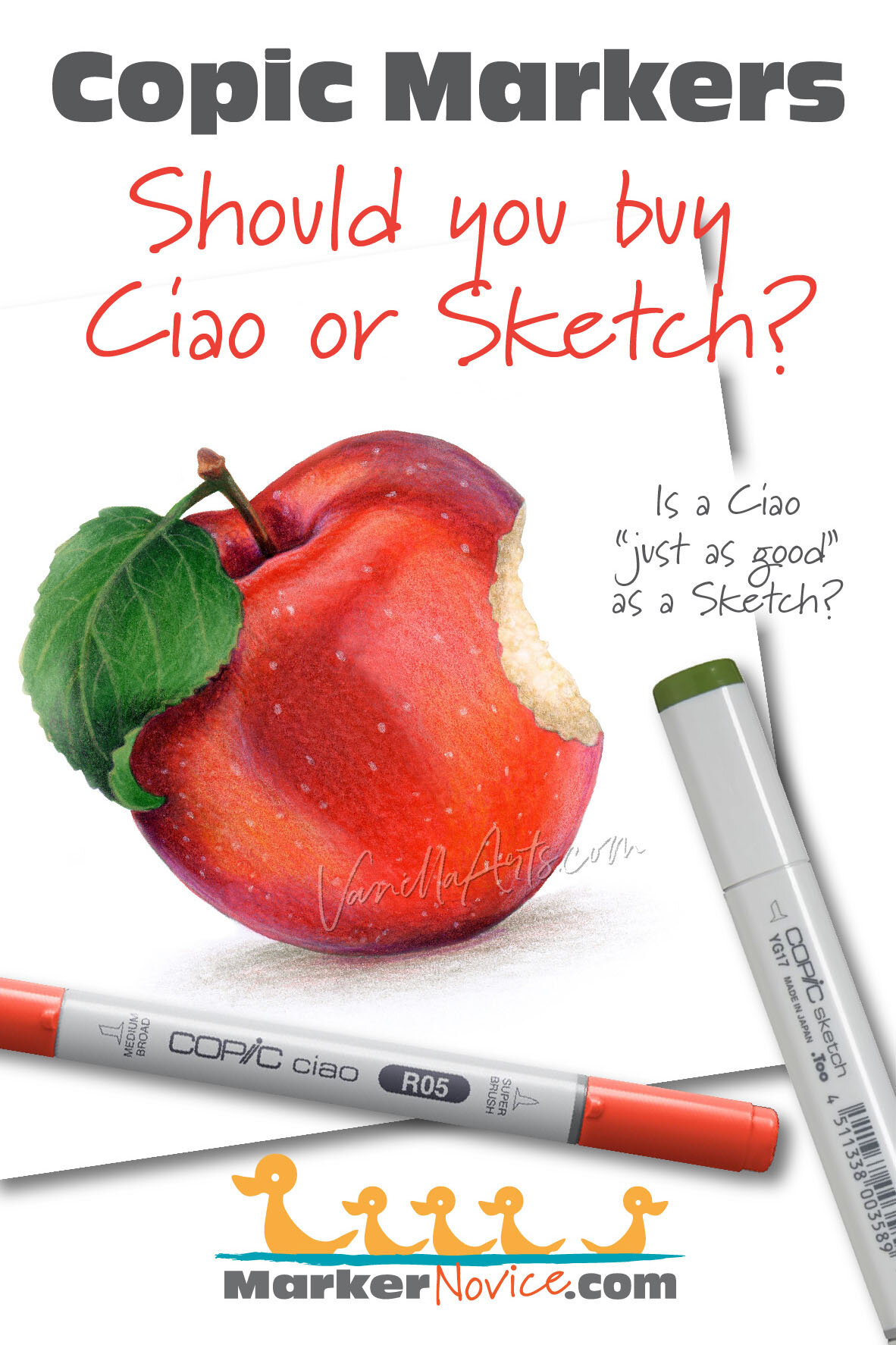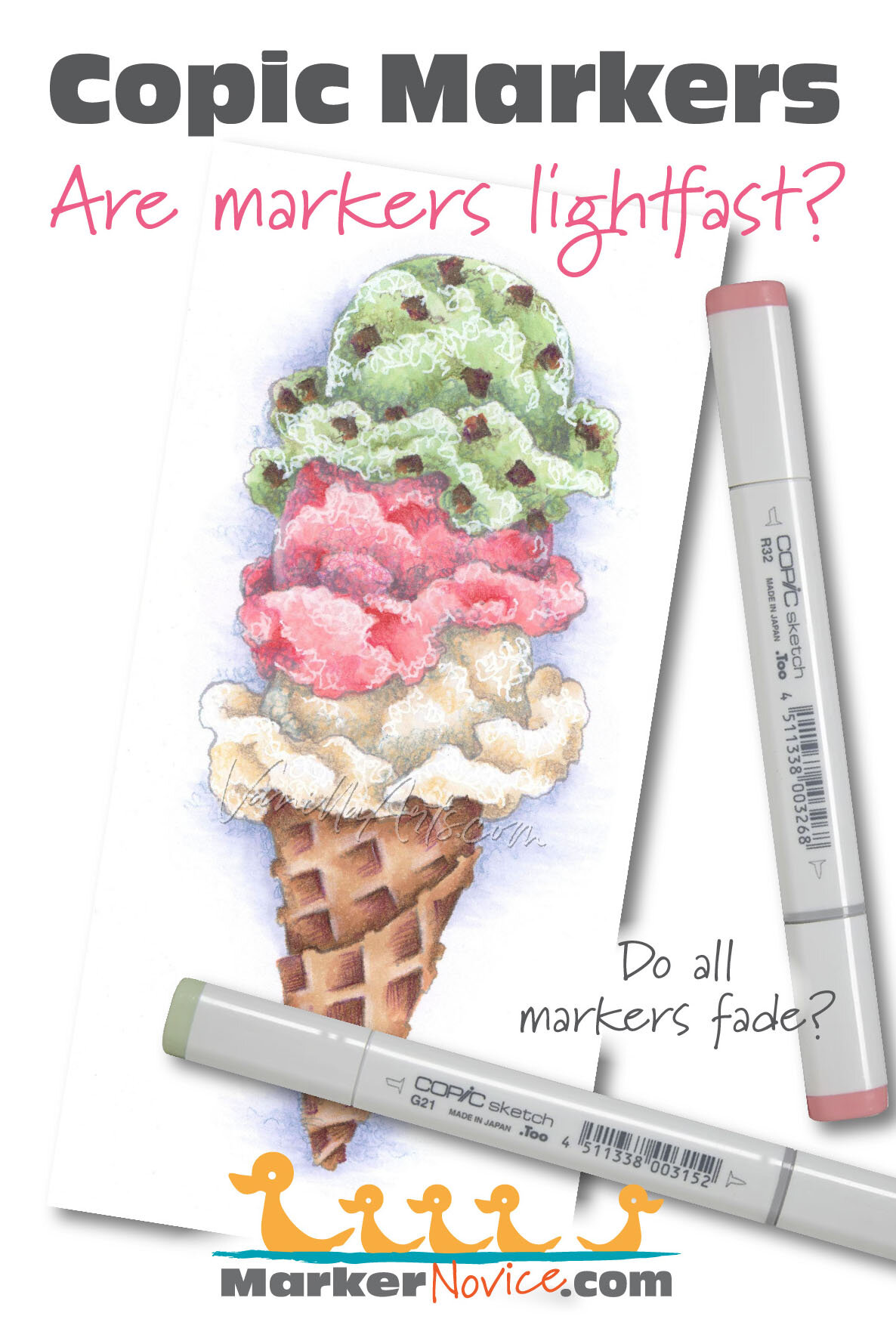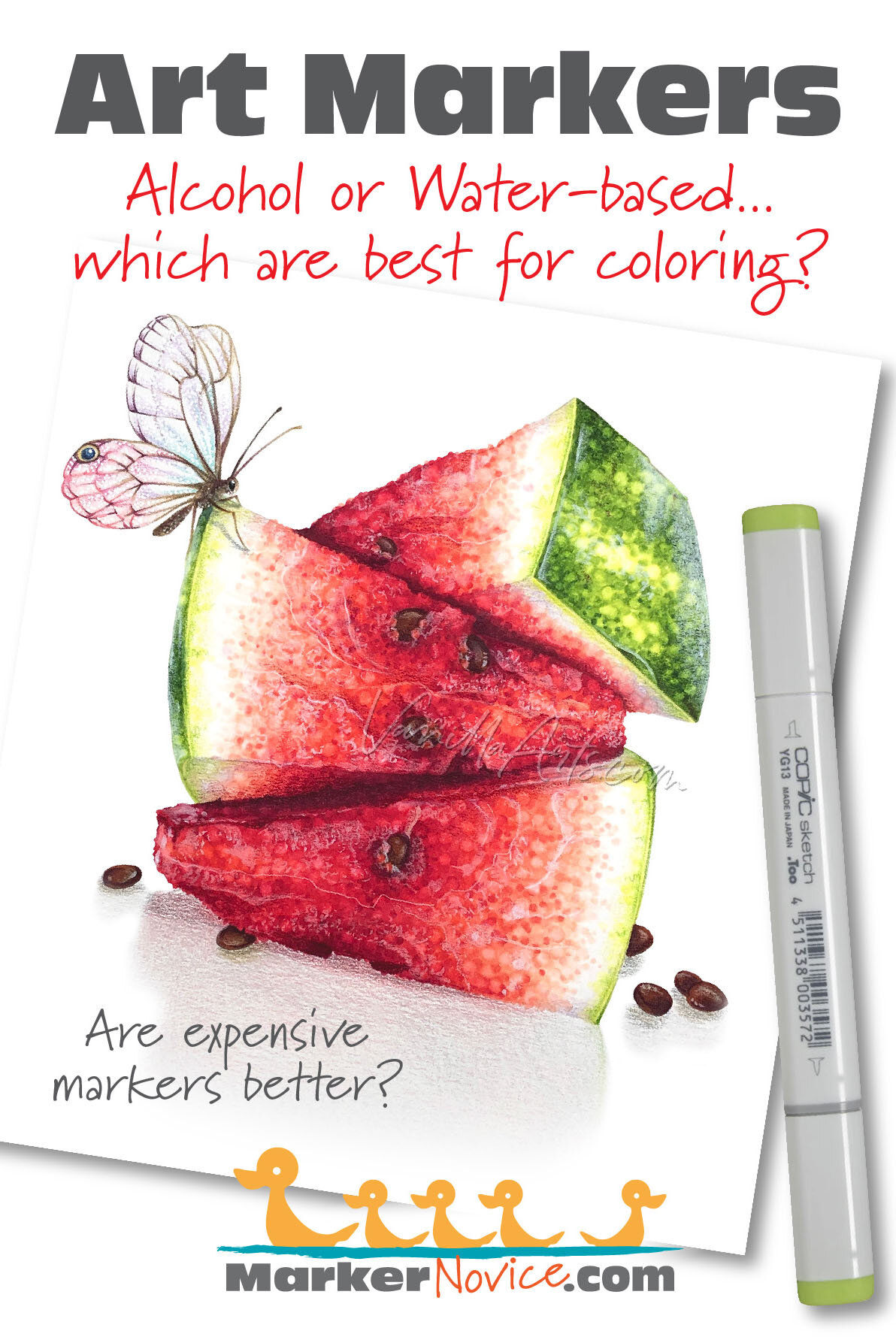Every Copic Marker has unique characteristics based on its unique ink formula.
Knowing how a color behaves will help you blend effectively and make art with confidence.
RV10 Pale Pink
Let’s take a closer look at this Copic Marker and its ink characteristics.
Temperature: A warm, pale magenta
Resemblance: Diluted Quinacridone Magenta watercolor
Actual Value: N1.5
All Copics are measured on a Neutral Gray value scale. The last number on the cap is supposed to indicate value but we’ve found discrepancies where the actual ink value is different than cap designation.
Name: “Pale Pink” is an accurate description of this color.
Marker Styles: RV10 is available in Sketch, Ciao, and Classic style markers.
For a Copic Wide marker in this color, you must purchase a “blank” or empty marker body and fill it with refill ink. Copic Wides have been do-it-yourself colors since 2019.
Copic makes refill inks for all 358 colors and every style of Copic is refillable.
Cap Accuracy: Close. The plastic on a Sketch marker closely matches the color of 1 layer of RV10
Buildup: RV10 reaches maximum value at 3 layers
Shattering: RV10 is too pale to detect any shattering. Other RV-Teen colors (starting with a 1) do not shatter, we expect RV10 to be the same.
Chromatography testing shows this ink’s behavior when it comes in contact with #0 Colorless Blender (solvent). High shattering colors may leak unexpected color when you make corrections or attempt to blend with any color that has a high solvent to colorant ratio. Shattering is not bad, it’s just something to be aware of.
Staining: RV10 does not stain. This is typical of pale markers.
Lift: RV10 is an easy-lifting color. Mistakes with this marker are easily correctable.
See staining swatch. Sample was given 6 stripes of #0 Colorless Blender, drying between each stripe. Results indicate how much lifting you can expect.
Lightfast: Very mild fading. This color faded by less than 5%.
Samples were swatched on X-Press It Blending Card. 1 layer of ink was exposed to windowsill sunlight for 21 days. Approximately 10 hours of sun per day based on weather conditions. Note: we do not recommend displaying original Copic art under these conditions.
Natural Ink Family: RV10 is the lightest member of the R-Teen family with RV19 at the dark end.
Family Members: RV10, RV11, RV13, RV14, RV17, RV19
Shop for RV markers at Violeta-ink.com (affiliate link)
We include this information because many Copic users never think deeper than the letter groupings (R, BV, G, etc.). Every ink has its own temperature variations and underlying flavors. Understanding what an ink looks like in its different dilutions helps when creating your own blending combinations.
Complement: A soft viridian green like G000 (affiliate link)
Underpaint: We suggest B21 (affiliate link)
This is simply one suggestion. Many possible colors exist. Test to find a color that pleases you.
Pushing Pencil: a very light layer of P1026 Greyed Lavender (affiliate link) is a good choice to shade this color. Please use very light pressure.
VanillaArts.com (our sister site) teaches a Push & Pull technique for dimensional coloring. This is simply one suggestion. Many possible colors exist. Test to find a color that pleases you.
Looking for beautiful color palettes?
We absolutely love The Color Catalog 1 & 2 from Sarah Renae Clark. It puts hundreds of Copic friendly color palettes at your fingertips.
(note: affiliate link)

